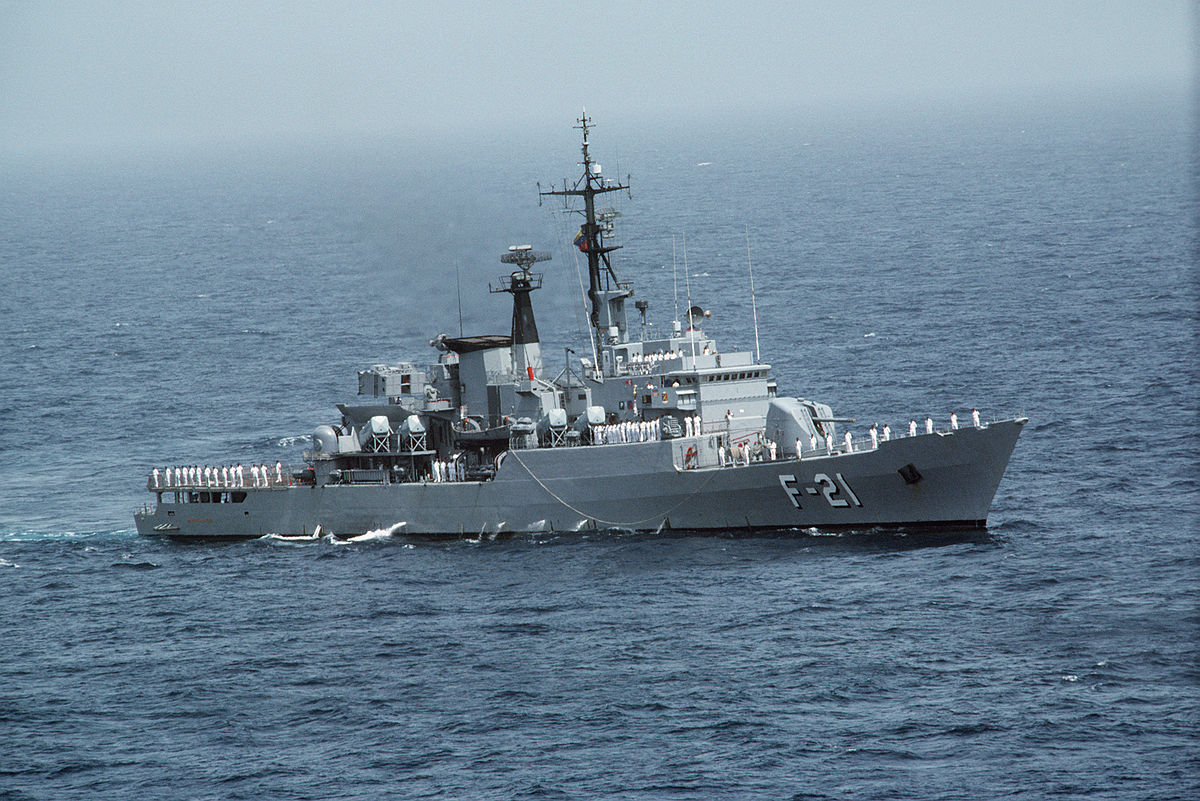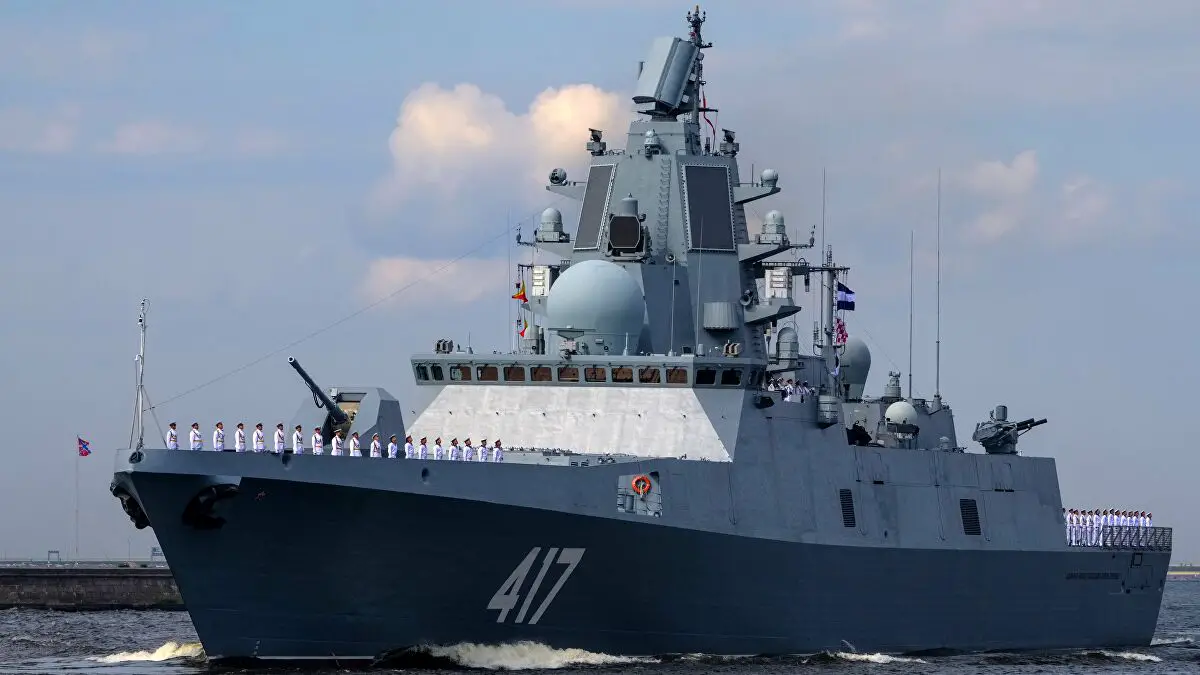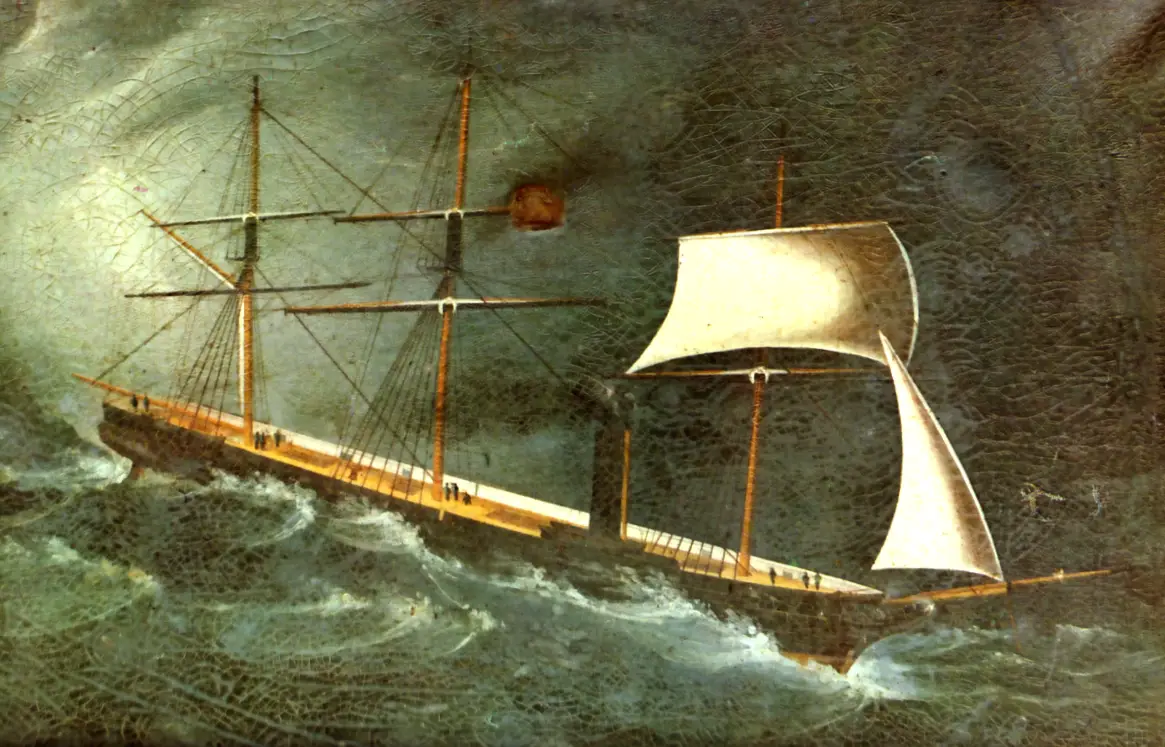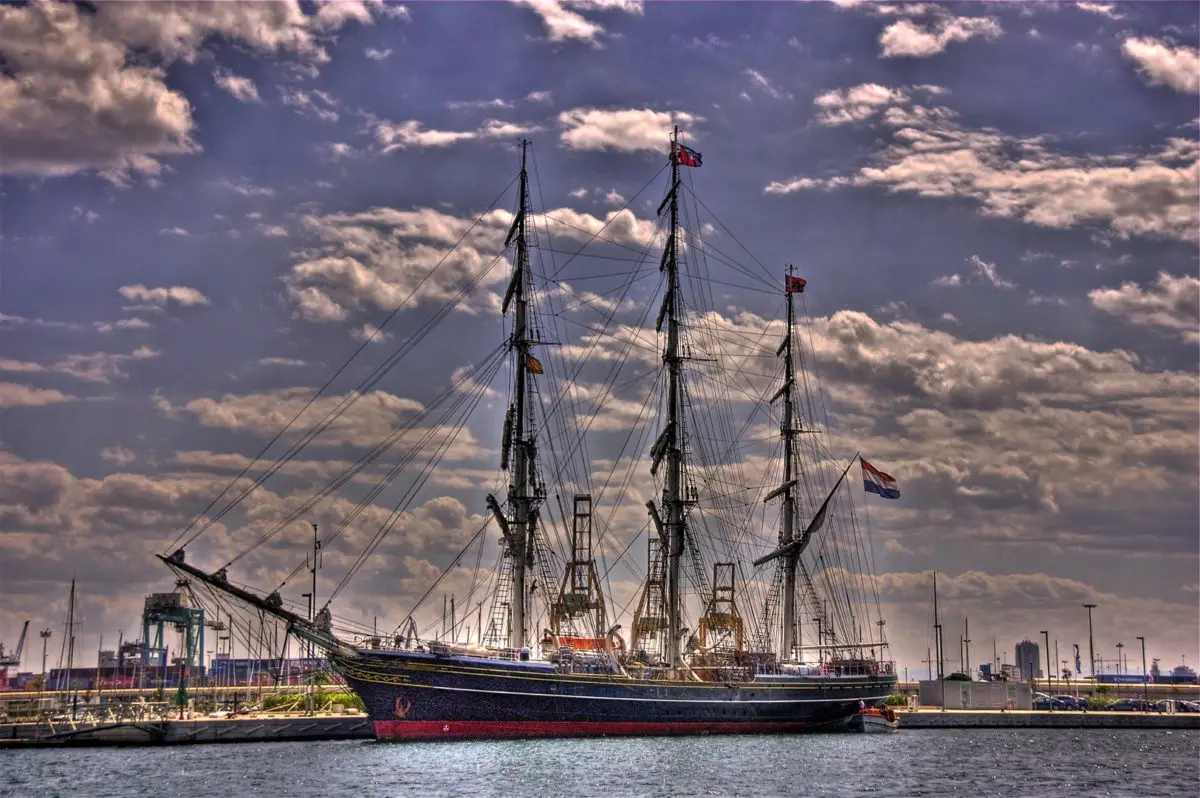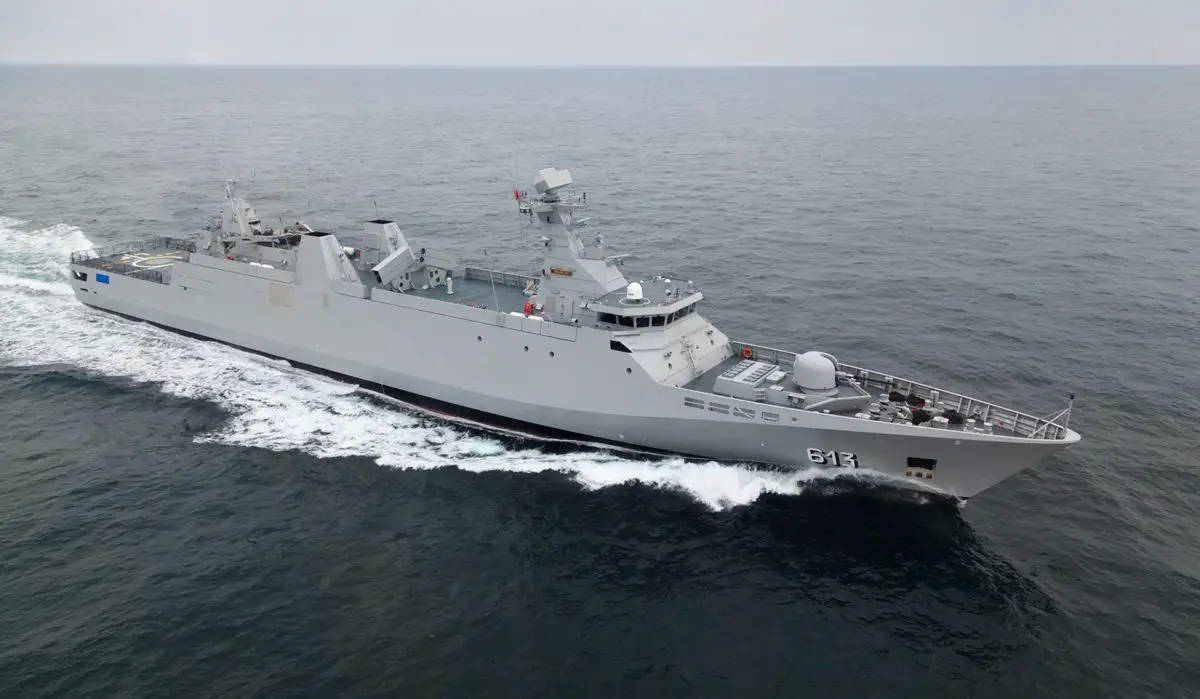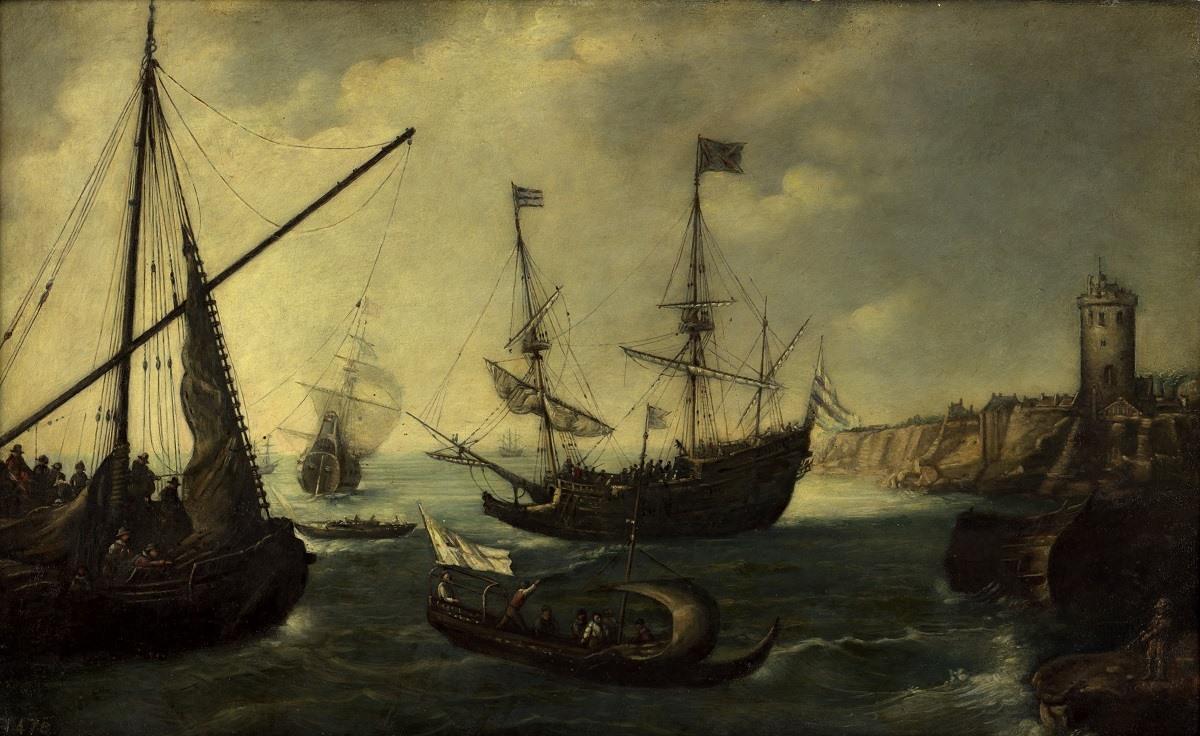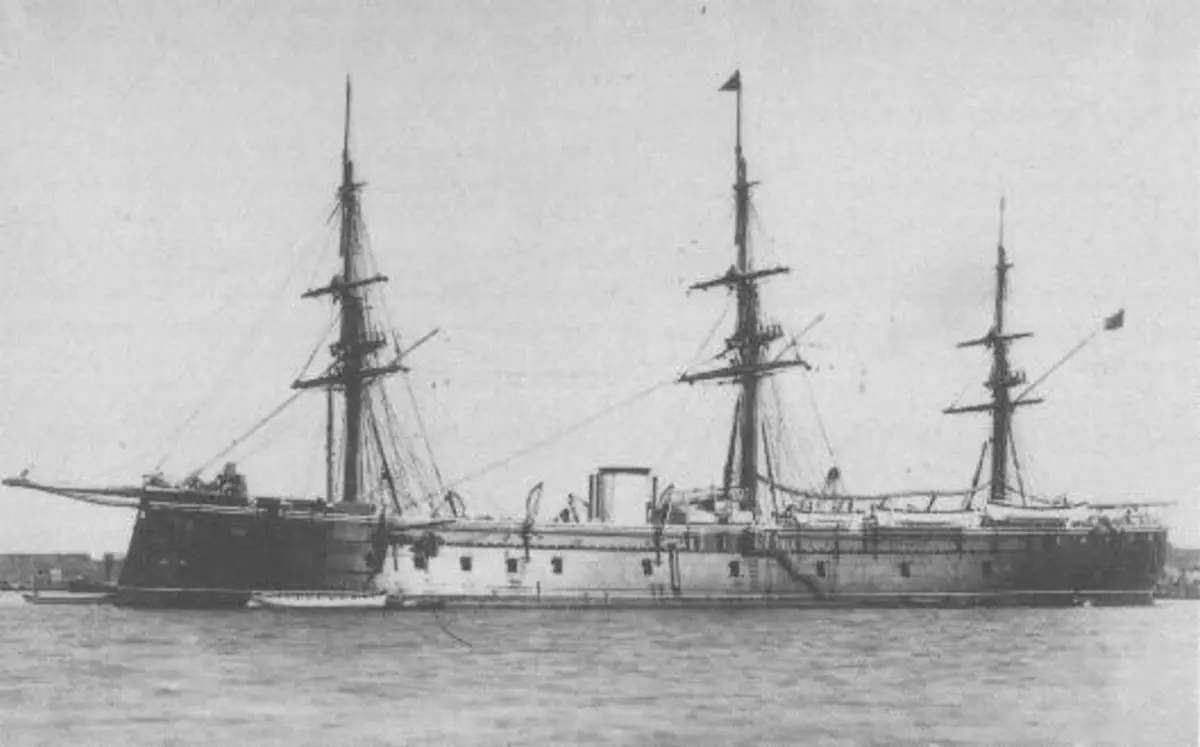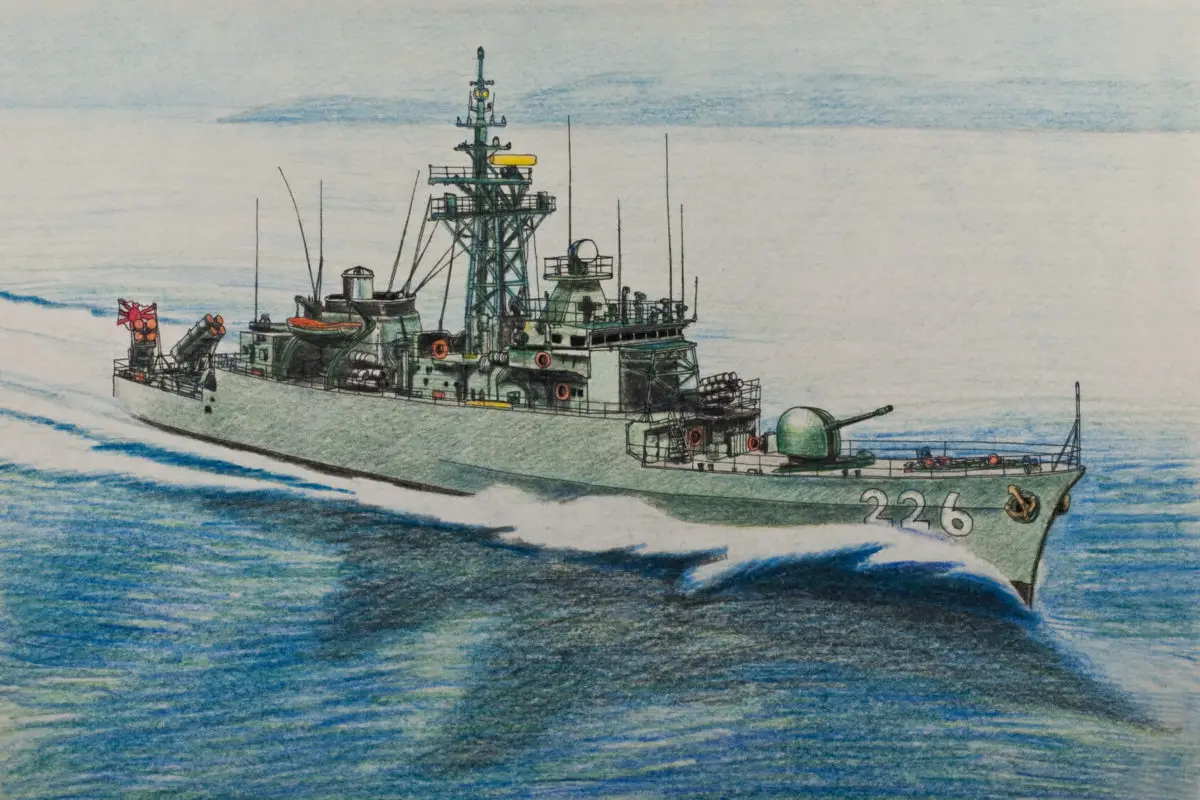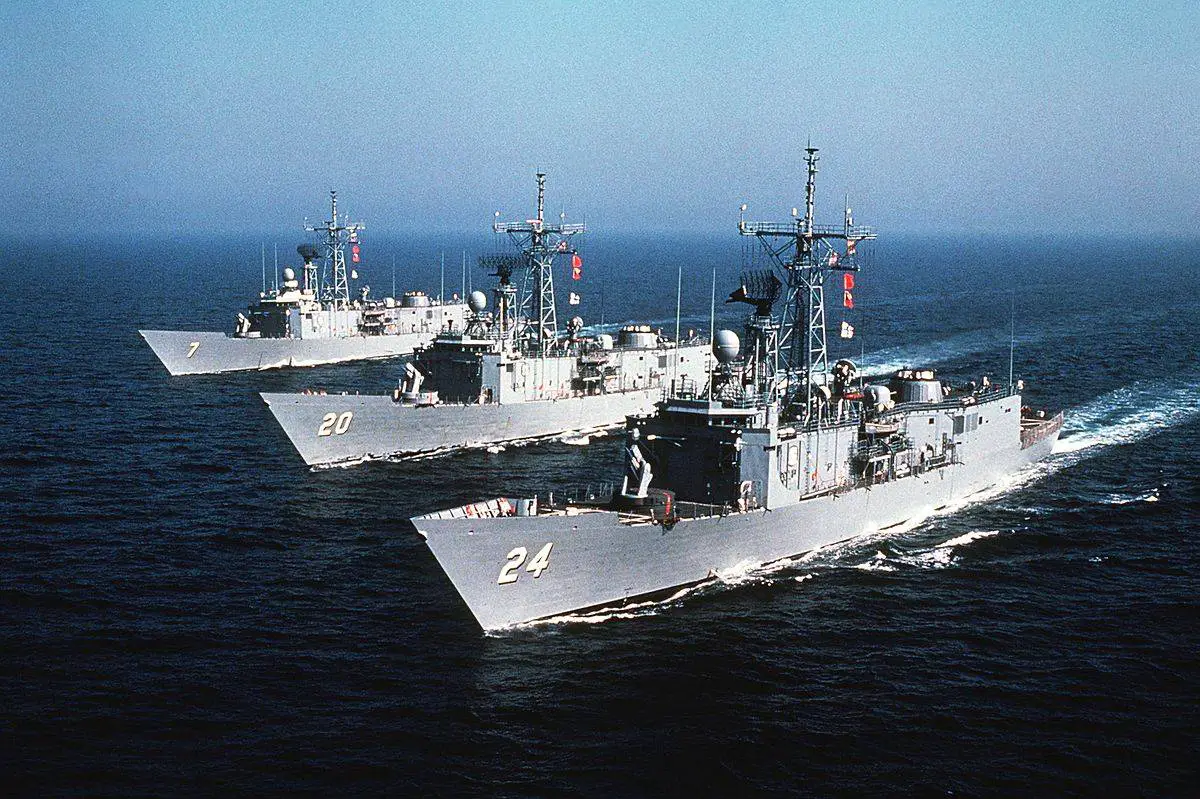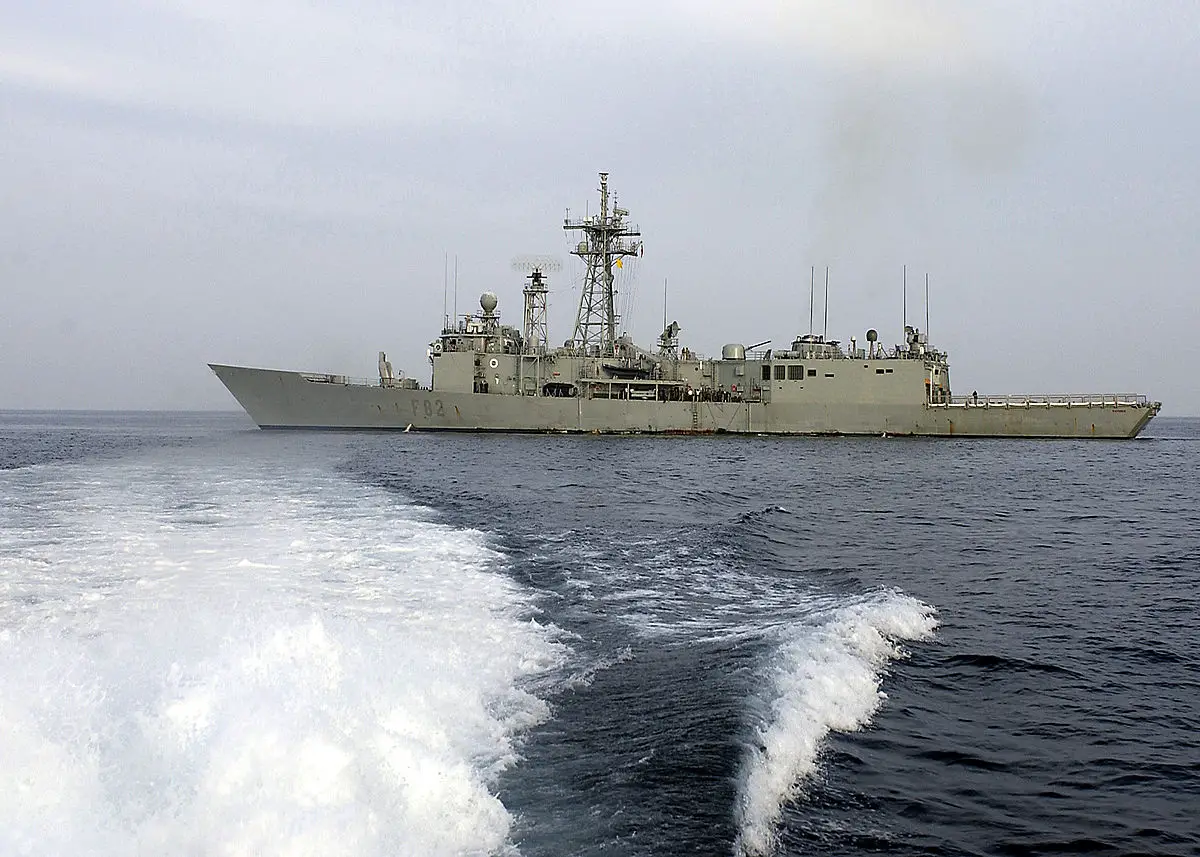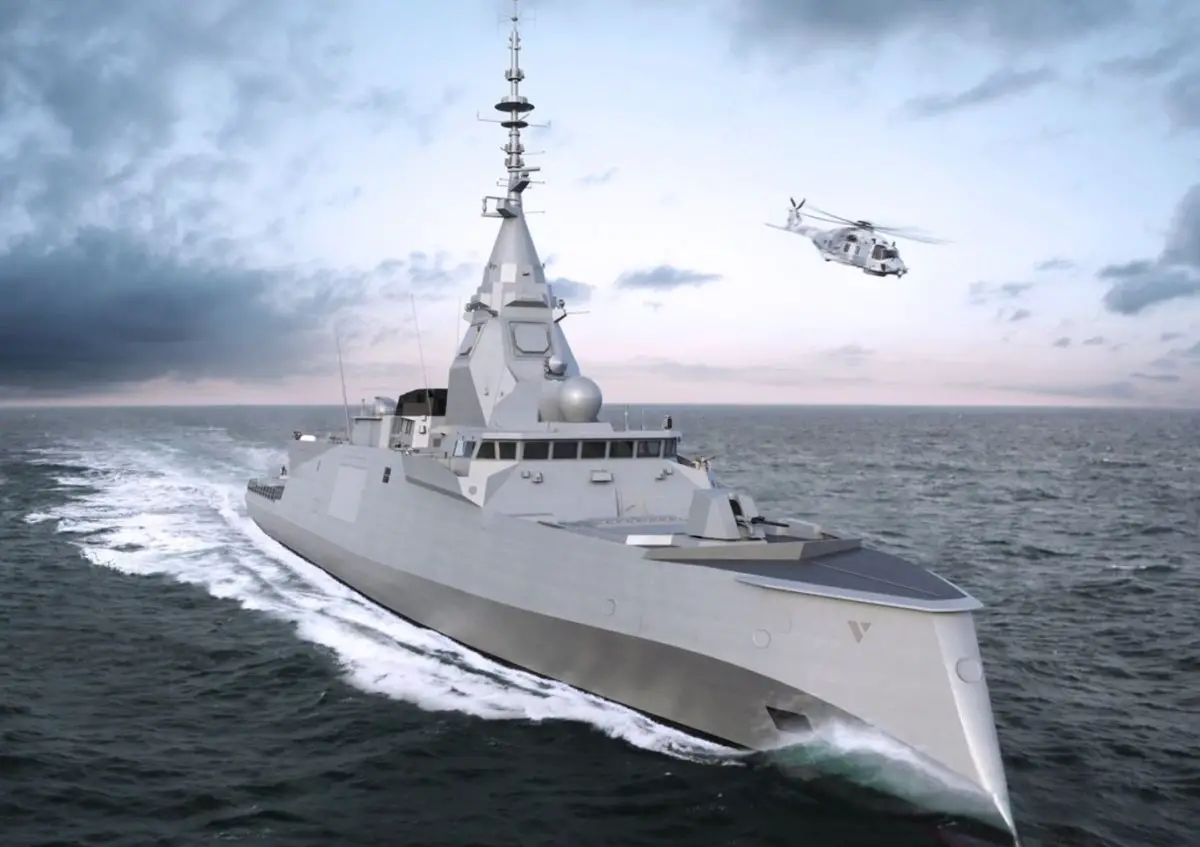Ships have always played an important role in the development of mankind, not only allowing the world to be explored, but also becoming the main element of maritime defence in the world. In the following we will talk about the frigate, an important ship not only in Europe but also in the world.
Indice De Contenido
What is a frigate?
We can say that a frigate is a warship designed for naval and anti-submarine warfare missions, but this ship may have systems that allow it to act as a support ship in various missions.
The term frigate comes from the pre-steam era and also from the squadrons of armoured ships of the second half of the 19th century. From the 17th century onwards, frigates were three-masted ships, which made them lighter than the ships of the line that formed the core of sailing squadrons.
Frigates had a maximum of two decks and were usually armed with a small battery and a total number of guns that rarely exceeded thirty, although it is documented that in some cases they reached fifty.
Despite its importance, the frigate disappeared during the last third of the 19th century, only to reappear during the Second World War as a type of ship slightly smaller than a destroyer, weighing between 1,500 and 2,000 tons and specialising in anti-submarine warfare.
After the Second World War, any ship up to the size of a destroyer was called a frigate, although these were slightly smaller and specialised for a single mission, but could also perform secondary roles.
In European navies, the frigate became popular during the Cold War for anti-submarine and anti-aircraft operations to protect the fleet. Such was the popularity of the frigate that even the United States built frigates, as they were more economical than cruisers and destroyers, and ideal for carrier escort duties.
In Spain, frigates were designed and used for both short- and medium-range anti-aircraft defence, as well as escorting the aircraft carrier Principe de Asturias, much like the United States. It is important to note that there are few differences between frigates and destroyers, and many of the ships classified in Europe as multirole frigates could easily be called destroyers.
On the other hand, some ships classified as destroyers could be described as frigates, even though they have even less displacement and capability than ships classified as destroyers. Therefore, the nomenclature between frigate and destroyer will depend to a large extent on the designation chosen by both the shipbuilder and the navy owning the ship.
Her history
In order to know a little more about the frigate, it is essential to know the history of this important vessel. Let us take a look at its origins, its use, and even the modifications and upgrades that have been made to this ship to improve its performance in the tasks that it has been assigned.
First constructions
The first thing to say is that the term “frigate” comes from the Mediterranean and dates back to the end of the 15th century and refers to a light galley with oars, sails and light armament. These ships were built to be fast and agile.
In 1583, during the Eighty Years’ War, the House of Habsburg recovered the southern Netherlands from the German rebellion. This led to the ports being occupied by privateers in the service of the Spanish crown, who were also dedicated to attacking the Dutch and their allies with light ships known as frigates.
The success of these Spanish privateers meant that the term frigate came to be used for any warship that was fast enough. The British, for their part, began to describe their light ships as frigates after the construction of HMS Sovereign of the Seas in 1651.
It is important to note that the fleet of the Dutch Republic would be the first navy to build frigates that were both large and capable of sailing the oceans. With the construction of this ship, the Dutch wanted to counterbalance the power of the Spanish fleet.
The Dutch had three main objectives: to protect the Dutch merchant fleet, to blockade ports allied to Spain, and finally to inflict damage on corsairs and allies of the Spanish Crown in order to prevent a landing of troops.
The first two objectives required speed and the ability to navigate the shallow waters of the Netherlands, as well as the ability to transport material and supplies to maintain the blockades. As for the last objective, it required heavy armament, sufficient to cope with the Spanish fleet.
All these objectives and the determination of the Dutch navy led to the construction of the first of the large Dutch frigates in 1600, which operated out of Hoorn. During the last years of the Eighty Years’ War, the Dutch decided to replace all their heavy ships with frigates, which were much lighter and could carry 40 guns.
The effectiveness of the Dutch frigates was clearly demonstrated at the Battle of Las Dunas in 1639. This led other European navies to take an interest in adopting the design, of which the English were the most prominent.
The first frigate built in England was HMS Constant Warwick, which had 26 guns and weighed between 380 and 400 tons. This frigate was built in 1646 by Peter Pett for the Earl of Warwick, who later transferred the ship to the government of that country. Peter Pett was inspired by a model of a French frigate he had seen in the waters of the Thames.
The English Navy did not remain with this model of frigate and this paved the way for the construction of the Southampton Frigate, which was built in 1667 and was the first ship to have the characteristics of what is considered a modern frigate. Generally speaking, the first frigates were between 12 and 30 metres in height.
What were they used for?
In principle, the role of the frigate in the age of sail was very similar to that of the protected cruiser of the late 19th century and the light cruiser of the early 20th century. The purpose of these ships was to protect overseas trade, as the speed of the frigate allowed it to use its speed to fight privateers and attack enemy traffic in wartime situations.
We must not forget that one of the last uses of the frigate was in combat, in support of the ships of the line, which played an important role in reconnaissance ahead and on the flanks of the navy. This mission is noteworthy because we must remember that we are in a time when there were no radars or radios to warn of danger.
Improvements and modifications
Ships known as frigates continued to play an important role after the advent of steam propulsion in the 19th century. In the 1830s, the navies of many countries experimented with large paddle steamers with large pieces of artillery mounted on the deck. By the mid-1840s, ships similar to traditional sailing frigates were being built, but with a steam engine driving a propeller.
Characteristics of the frigate
Since its creation, the frigate has become a very popular ship for which a number of innovations have been made, each with its own characteristics depending on the use to which it is put. Below we will look at the characteristics of each frigate.
Classics
Classic frigates are widely known today for their role in the Napoleonic Wars. Therefore, to talk about classical frigates, we have to go back to the French designs of the second quarter of the 18th century, mentioning that the French frigate Médée of 1740 is very often considered as the first example of this type of ship.
These ships were square rigged and carried all their guns on their single upper deck. The lower deck was known as the “gun deck” because it housed the crew’s quarters and was usually below the ship’s waterline.
The slightly more modern classical frigates could fight with all their guns in seas that were considered quite stormy for double-decked ships. These modern frigates sailed very well in these seas and became formidable opponents due to their elongated hulls, which gave them more speed and gunnery capacity.
The British Royal Navy managed to capture one of these new frigates during the War of the Austrian Succession, but it was no easy task and they were impressed by the ship’s manoeuvrability, especially in coastal areas. With the capture of this frigate, the British were able to copy the design and adapt it to their own needs, laying the foundation for other frigates they built.
Armour
From 1859, frigates and propeller-driven ships of the line began to be fitted with armour. The extra weight of these early armoured ships meant that they could only carry one deck of guns, so in theory they should be considered frigates, even though they were much more powerful than any wooden ship of the line of the time.
The term “iron frigate” or “armoured frigate” remained in use for some time to indicate that they were equipped with sails, steam propulsion and an armoured side battery or central redoubt.
By the end of the 19th century, the term frigate had fallen into disuse and these ships were known as ironclads or ironclad cruisers. Protected cruisers had only one armoured deck, and those ships that were not armoured, including frigates, became known as ‘unprotected cruisers’.
World War II frigates
The term “frigate” was repurposed during World War II to describe a new type of anti-submarine escort ship, larger than a corvette but smaller than a destroyer. However, it had the size and capabilities of a destroyer.
The frigate was reintroduced to address some of the problems of corvettes, such as limited armament, a hull that lacked the shape necessary for open-sea navigation, a single propulsion shaft that severely limited the ship’s manoeuvrability and speed, and a lack of range.
As a result, the frigate was designed and built to corvette standards, using shipyards that at the time were not adapted to building warships. The first class of frigates, called the River Class, was built in 1941 and was essentially a corvette but with a larger hull and armed with the new Erizo anti-submarine weapons.
This frigate has less attack power and speed than a destroyer, but these qualities were not necessary for anti-submarine warfare. This is because submarines were slow, unable to exceed 20 knots for their operations.
The importance of the frigate during the Second World War was such that mass construction of the frigate was pursued in order to equip it with the latest innovations in anti-submarine warfare. However, as the frigate’s original purpose was to accompany convoys rather than operate in a fleet, its range and speed would be limited.
The contemporary Nazi ships, also known as “Flottenbegleiter” or “F-Boats”, were essentially frigates. They were based on the pre-war OBK concept of a light minesweeper, merchant escort and anti-submarine vessel. With the Treaty of Versailles the displacement was officially limited to less than 600 tonnes, but in reality this was exceeded by 100 tonnes.
The F-boats were equipped with two gun ports and two 105mm guns. However, the design of these ships was flawed, as they had a narrow hull and unreliable steam turbines. For this reason the F-Boats were replaced by the 35 class and the Eilbing class torpedo boats, but many of these frigates were still in service as training ships.
It was not until the appearance of the British Royal Navy’s Bay Class in 1944 that a British design with the frigate name was used for a fleet, but it should be noted that the speed of these ships was rather limited.
These anti-aircraft frigates were built with incomplete hulls of the Loch class, similar to the destroyer escorts designed by the US Navy. It should be noted that these American ships had greater speed and much more powerful armament, making them capable of serving in a fleet. Eventually, with the entry of the United States into the war, these American destroyer escorts worked alongside the British frigate fleet, allowing the British to deploy and improve their own frigates.
Modern frigates
The introduction of guided missiles after the Second World War changed the role and design of frigates. In the US Navy, these ships are known as escort ships. The British Royal Navy, for its part, has retained the use of the term “frigate”, as has the French Navy. This term refers to ships equipped with missiles and superior to cruisers.
The Spanish Navy has two classes of frigates, the Álvaro de Bazán class and the Santa María class. During NATO manoeuvres, the Bazán class frigates act as destroyers. Importantly, all modern frigates are now equipped with both offensive and defensive missiles. They also carry a significant number of guided missiles.
Improvements in surface-to-air missiles, such as the Eurosam missile or the MBDA Aster, allow modern frigates to form the core of the vast majority of the world’s navies. These upgrades and improvements have also meant that navies no longer need dedicated anti-aircraft vessels.
In this article we have been able to learn about the frigate, a ship that is characterised above all by its speed and its ability to attack and defend itself in a wide range of circumstances. This type of ship has undergone numerous adaptations that have allowed it not only to endure over time, but also to become the main ship of the most important navies in the world. You may also be interested in the following articles:
- Champagne Beach, beautiful white sand beach in Vanuatu.
- Galapagos Marine Reserve, the second largest in the world.
- Discover the island of St Lucia, a paradise of volcanic origin.
- Get to know the stunning Isle of Skye, famous in Scotland.

